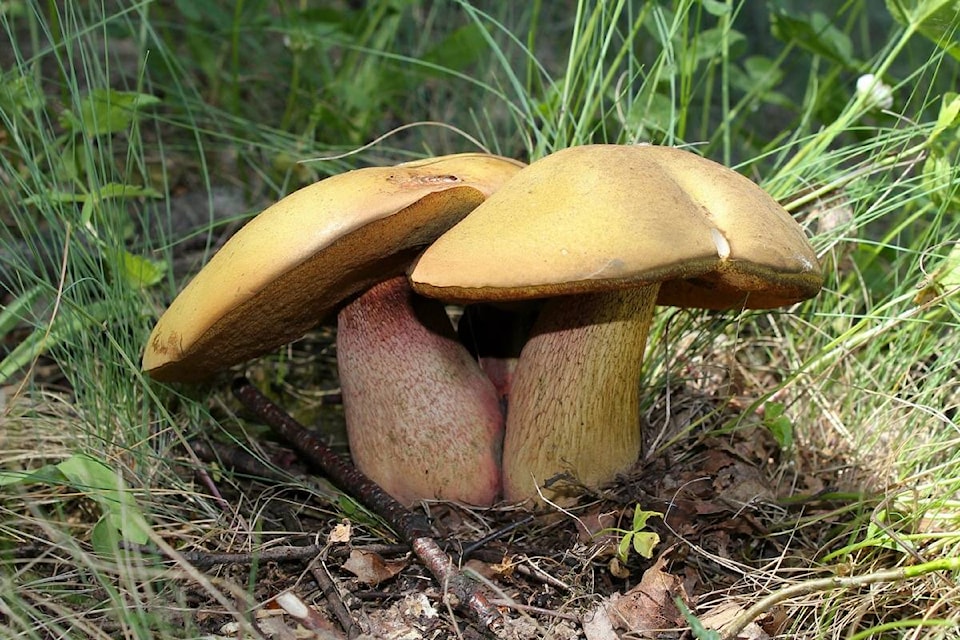The hot, dry August (total of only 18 mm in our rain gauge) was followed by refreshing cooler and wetter September (70 mm in our gauge).
Earlier than normal, the signs of autumn began to appear. Several firsts in the last half of September were frost on the roofs, having to chase the chill with a fire in the wood-burning stove, migrating dark-eyed juncos and white-crowned sparrows appearing at the bird feeders, and a surprisingly first snowfall (Sept. 27) on the hilltops.
Perhaps the main sign of autumn is the colour change of leaves and needles from green to gold. The native golden-aster (technical name Heterotheca villosa) and rabbit-brush (Chrysothamnus nauseous) capture the brilliant sunshine with masses of yellow flowers delicious to bees. As autumn progresses, hemp dogbane (Apocynum cannabinum) leaves turn yellow in short cool days.
To the east of Penticton there below the snow-capped hilltops are patches of golden western larch. Downhill from the larch are yellow patches of trembling aspen.
Then in moist gullies, the yellow-leaved trees are frequently of aspen mixed with black cottonwood. The cottonwood extends down to the lakeshore while the aspen drops out a couple of hundred metres above lake level. The oldest needles on the ponderosa pines turn to gold, then brown and blow away in strong winds.
Beneath the ground, the root tips of most tree species are in a symbiotic relationship with fungal fibres (mycelium). The association is very beneficial to the health of forests in that the enormous mats of underground mycelial growth provide vital nutrients to the tree while receiving carbohydrates in return.
In the autumn the fungus diverts its energies from supporting tree growth to the production of mushrooms.
If you frequent areas near larch or pine you’ve probably trod on, mowed down or cycled over some slime-covered stocky mushrooms commonly called Slippery Jacks (Suillus, pronounced swill-us, Latin for of a pig).
The slimy surface when wet is protection from rainwater water blocking the delicate spore-bearing tubes.
One of our most common species is Suillus brevipes (brev-a-pees, Latin for short foot). It’s a yucky-looking baby diaper brown on top but flip it over and the underside is butter yellow. Instead of the familiar pink gills found on supermarket mushrooms, these ‘shrooms’ have hundreds of small yellow pores or tubes wherein spores are formed.
The spores are shed into the air and serve as a mechanism for long-distance spread.
Most Suillus are edible but few are choice. Some people may experience gastric distress. Cooks should discard the slimy skin and tubes and check for maggots. This will improve the texture and lessen the chance of diarrhea. Tempting, eh?
Many forest creatures are fond of mushrooms. Squirrels will hang fungi on tree branches to dry for winter use. We call an all-white mushroom, which pops up in abundance in November if conditions are mild and moist, the deer mushroom (Hygrophorus gliocyclus) because they like it enough to dig it up. Remember though, just because animals eat them, their chosen fungi may not be safe for humans.
Natural deterioration is often hastened when the mushrooms become food for maggots, principally the larvae of fungus gnats.
Jim Ginns is a member of the South Okanagan Naturalists’ Club. The views expressed here are not necessarily those of the club. For club activities go to southokanagannature.com.
